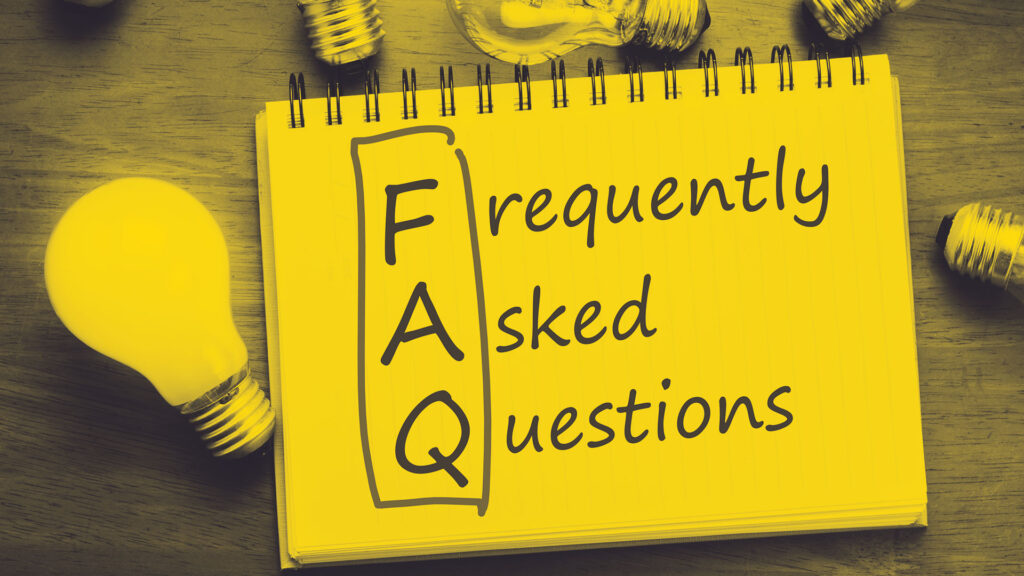AI is answering meeting planners’ questions before you can say “sales deck.”
Attendees are ghosting your website in favor of in-feed answers.
And everyone’s regurgitating the same listicles from 2019.
From AI assistants to zero-click content, here’s what you need to know and how you can apply these content strategies to your DMO’s meetings marketing.

Trend 1: AI Engagement Platforms
- For meeting planners, artificial intelligence is taking the grunt work off plates — helping answer questions and giving insights without adding headcount.
- For attendees, it’s becoming a local expert in their pocket — guiding, translating and recommending in real time.
Love it or hate it, AI = assistance instantly.
First, the Takeaways for DMOs
- Start small with AI: A chatbot connected to FAQs is a low-cost, high-impact starting point. Track what it can’t answer — those are your next content ideas.
- Treat chatbot fallbacks as marketing intel: Review logs regularly to identify content gaps and inform future site improvements or sales talking points.
- Be the system’s content source: AI tools pull from your site, PDFs and maps. Structured, current content increases your visibility in the attendee journey.
- Train for the handoff: When AI hits its limit, make sure your sales team is ready to step in. These leads aren’t cold — they’re already warmed up.
- AI levels the playing field: For mid-sized and small destinations, well-structured content can surface in the same tools used by large markets. You don’t need a big budget to show up smart.
A Couple of Examples…
For attendees, let’s look at CventIQ, the new engagement platform.
How it works:
- Attendees use their event app to view a real-time transcript of what the speaker is saying. When they hear something they want to remember, they click to save a “snapshot” of what the speaker said — each tap shows exactly when your audience is most engaged.
- Organizations and speakers can measure audience engagement rather than relying on attendance numbers alone.
Now, let’s look at chatbots. They’re popping up on cities’ sites everywhere.
They’re helpful, but sometimes, when planners ask layered, logistical questions, a lot of chatbots hit a wall. Nuanced questions around safety, for example, get a default message that encourages users to head to the main site, but not to specific content.
And that’s not a flaw. That’s an opportunity for your team to be able to look and say, “Hey, we’re missing something.”
Hitting a wall in the chatbot can also be your sales team’s entry point.
We’ve seen how some destinations are training their AI tools to route with purpose. So not just saying, “Sorry, I don’t know.” But instead, using the moment to highlight the value of their sales team.
And when that handoff happens, your team needs to be ready to engage. These aren’t cold leads — AI has already warmed them up. Your team is one of your brand’s biggest assets.
And DMOs have a critical role to play. These tools pull from websites, PDFs, maps — so if your content is structured, accurate and up-to-date, your destination becomes part of the in-event experience.
Most AI chatbot platforms offer a backend where you can:
- View conversation transcripts
- Export logs to CSV or dashboard tools
- See the most common queries
- Track fallbacks (when the bot didn’t have an answer)
Over time, these chat logs become a goldmine for your marketing team. They show you exactly what planners and attendees are looking for and where your content might need a little backup. So keep an eye on the questions your bots can’t answer. That’s your next round of web content.
For DMOs, you can:
- Become the AI-ready content hub
- Feed structured, accurate data to event AI tools
- Monetize local exposure through AI-driven content prioritization
Because if you’re not feeding the system, someone else is.
But even the best AI needs the right kind of content to perform. And today, content isn’t just for your website — it’s for the AI assistant, the inbox and the scroll.

Trend 2: Zero-Click Content
Janet Mesh, Aimtal CEO & Founder, said: “It sounds backward. If you want your content to succeed, make sure people never click on it.” Zero-click content is exactly what it sounds like: delivering value without requiring a click. Whether it’s LinkedIn carousels, Google previews or in-feed content, the message hits before the site loads.
First, the Takeaways for DMOs
If you’re building awareness and trust before a planner ever hits your homepage, you’re doing your job.
“Traffic to trust doesn’t feel quantifiable.” How to measure success if clicks and visits aren’t prioritized as much:
Track:
- Social saves, shares and carousel engagement
- Reduced planner inquiries (because content answered them)
- Engagement in chatbot or AI assistant logs
- Direct leads or inquiries routed from chatbot “handoffs”
Other Notables:
- Deliver answers upfront: Convey them in social carousels, Google previews and FAQ-rich pages — no click required.
- Repurpose existing content: Break planning guides into LinkedIn or Instagram slides. A 30-page PDF can become a month’s worth of social content.
- Smaller DMOs can win big: Structured, searchable, FAQ-based content gives you visibility beyond your marketing budget. Google doesn’t care if you’re Tier 1 — it cares if your answer is clear.
In Action…
- For DMOs, this is huge. If your story convinces someone in their scroll, they don’t need to visit your website to believe in your destination.
- To combat declining click-through rates, DMOs are preemptively offering content in formats that deliver value on the spot.
Examples of this strategy in action:
- Many DMOs are investing in answer engine optimization by publishing FAQ-style content and applying structured data so that their information surfaces directly in search results or voice assistant answers.
- By positioning content to appear in featured snippets and Google’s “People Also Ask” boxes, DMOs ensure that meeting planners and travelers get the needed details (venues, capacities, local tips, etc.) without having to navigate away from the search results.
- This keeps the DMO visible even when users don’t click.
- Some destinations are sharing full guides and bite-sized videos on LinkedIn and Instagram rather than just link teasers, so meeting planners scrolling social media can consume useful planning content without leaving the app.
And Another Tip
Look at your planning guides for top reasons to meet and break them into carousels for social, allowing planners to glean highlights instantly.
It’s a shift from measuring traffic to earning trust, so things to think about here are that you want to:
- Design for scanability
- Optimize for preview formats
- Stop burying the good stuff behind three clicks
Mimi Turner, Head of Marketplace Innovation for LinkedIn, said: “B2B marketers who focus on what drives confidence — not just clicks — will be best positioned to lead in 2025.”
DMOs should be thinking about reducing friction by providing answers up front.
- DMOs can maintain visibility by ranking in position-zero results, even if website traffic itself may not be the end goal.
Zero-click content gives you reach, but not all audiences want the same message. That’s especially true in meetings and events, where two very different digital journeys are unfolding. Enter, trend 3.

Trend 3: Content Serving Two Digital Audiences — Planners vs. Attendees
Planners and attendees are looking for different things.
First, the Takeaways for DMOs
- Speak to different audiences: Recognize the dual journey of planners and attendees.
- Use digital tools to reduce planner friction: By supporting attendees through content, you take pressure off the planner and show up as a true partner.
- Even small DMOs can excel here: A simple, mobile-friendly attendee guide and a planner FAQ page go a long way.
Content for Each Audience
Planners might want B2B content or RFP-ready content, which can include:
- Planning essentials
- Venue capacity charts, hotel inventory/room availability
- Maps showing proximity
- Past group successes/case studies
- Sustainability credentials
- Accessibility and ADA compliance
- Clear, filterable assets
- Filters by meeting size, event type or seasonality
- Venue comparison tools
- Ability to search sports, unique venues, offsite options
- Incentives or booking perks
- Sample itineraries and testimonials
- Local IP partners
- DEI partnerships
Attendees are usually driven by real-time needs — where to go, what to eat, how to navigate. It’s short-term, emotional and personal.
Your website and digital tools need to serve both: the logic-driven decision maker and the experience-driven end user.
- By providing a ready-made attendee website, this frees up planners from fielding destination questions and lets the DMO leverage its local expertise directly with attendees.
- Meanwhile, on the planner side, those same DMOs maintain robust meeting planner portals (with RFP forms, facility databases and service contacts). The two-audience strategy ensures content is “right-sized”: planners get detail-rich planning info, while attendees get inspiring, easy-to-digest guides to enjoy the host city.
Think of it this way: You’re not just marketing to planners — you’re co-hosting with them.
- And while automation is powerful, even the smartest content and digital tools have limits. At some point, the human touch still matters. And that’s where your local team becomes your destination’s strongest closer.

Trend 4: The Anti-AI
AI doesn’t have peers. It doesn’t have nuance. It doesn’t have strong opinions.
Your team’s input is more valuable than anything.
- DMOs are reminding the industry that while AI can crunch facts, it’s the local flavor, personal stories and on-the-ground expertise that truly set a destination apart.
First, the Takeaways for DMOs
- Lean into your human edge: AI can’t match your relationships, cultural nuance or personal insight. Local expertise is a core asset.
- Highlight your intellectual capital: Showcase local experts in key industries — especially for medical, tech or sustainability-focused meetings.
- Use chatbot “misses” as sales openers: Don’t just apologize when AI fails — use it to invite personal connection and planner support.
- Value those human connections: AI can point, but only your team can create meaningful connections.
Intellectual Capital Is a Good Example of Setting a Destination Apart
Our clients like Atlanta, Park City, Pasadena, Phoenix and Savannah — destinations traditionally known for certain mainstays — are actively reshaping their content to highlight their destination’s local intellectual capital in fields like medicine, tech, sustainability and more.
For example, Phoenix showcases its downtown Bioscience core (a 30-acre life sciences innovation district) as a unique asset for medical meetings.
By connecting planners with local experts (surgeons, researchers, innovators) and showcasing venues like labs and university facilities, the DMO provides insights an AI summary might miss.
This approach taps into local knowledge networks to add rich context to meetings – proving that insider knowledge and human connections (the kind only locals and CVB insiders have) are invaluable for creating memorable, place-based meeting content.

Trend 5: Contrarian Content Cuts Through the Noise
Want to stand out from AI? Sometimes you have to dare to be different. Look at contrarian content. When everyone says the same thing, the bold voice becomes the trusted voice.
First, the Takeaways for DMOs
As Andy Crestodina of Orbit Media puts it: “Take a stand, because AI has no opinions.”
Contrarian content isn’t about being edgy for the sake of it. It’s about telling the truth others aren’t ready to say — and that’s how destinations become trusted.
You can be contrarian without being controversial – it’s not always about having a hot take, it’s about thinking about things differently.
Examples for DMOs & Campaigns: Flip the Narrative to Reshape Perception
- Show how mid-sized cities outperform Tier 1s.
- Show that walkability isn’t everything — the enjoyment of the walk can be more valuable.
Examples for DMO Leadership
- Address safety concerns directly, not defensively.
- Address criticism transparently instead of letting assumptions spread.
We’ve seen some DMO leaders speak hard truths, reject industry clichés and go against expectations.
How Do You Know Which Trends to Prioritize First?
Start by auditing your existing strengths:
- If you have strong local expertise and industry partnerships → lean into anti-AI and contrarian content.
- If you’re already producing a lot of content but seeing less traffic → focus on zero-click content and answer engine optimization.
- If you’re preparing for a major citywide → prioritize AI engagement tools that enhance service without extra staffing.
If you need more help prioritizing or executing, we can extend your travel & tourism organization’s team with content strategy and copywriting. Want to learn more?



